Mortuary Temple of Hatshepsut
Djeser-Djeseru “Holy of Holies”
The Temple of Hatshepsut sits beneath the golden cliffs of Luxor’s West Bank, blending beautifully with the desert scenery. In ancient times, it was called Djeser-Djeseru, meaning “Holy of Holies.” This mortuary temple is one of the most impressive monuments from Egypt’s New Kingdom. Its large terraces, columned halls, and colorful carvings tell the story of Hatshepsut, a queen who broke tradition to become pharaoh.
For visitors, the temple offers more than just history; it provides an experience. Standing at the bottom of its huge ramps, with the towering cliffs of Deir el-Bahari above, you can feel the importance of history and the vision of a ruler who made her mark for eternity. This guide combines history, architecture, and travel tips to help you plan a meaningful visit.
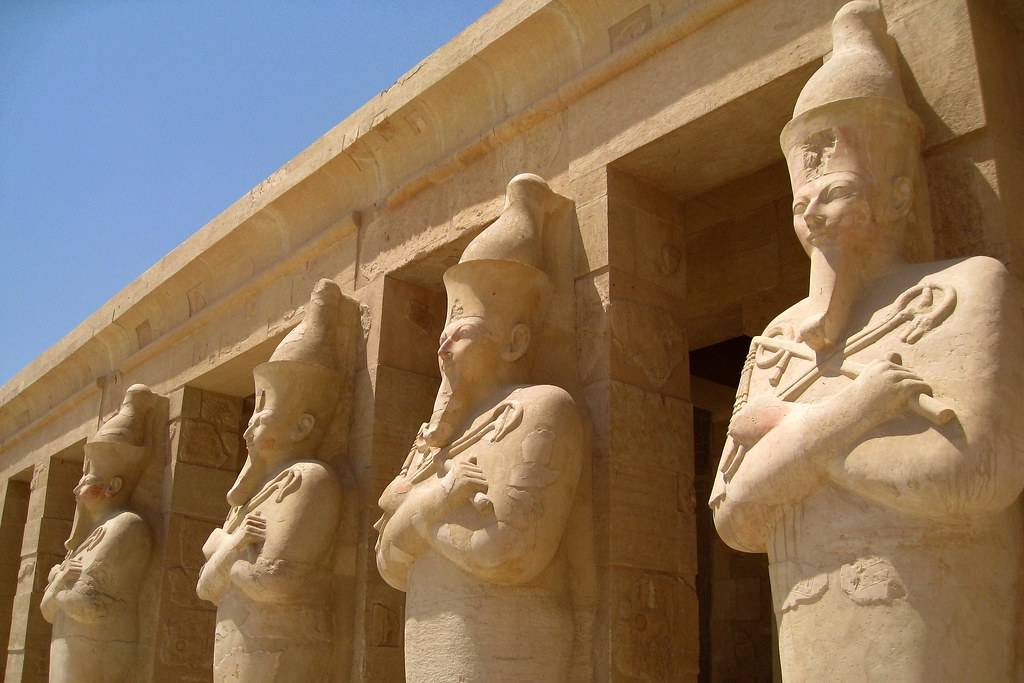
Who Was Hatshepsut? Egypt’s Female Pharaoh
Hatshepsut was born into the royal family of the 18th Dynasty. She was the daughter of Pharaoh Thutmose I. Hatshepsut married her half-brother, Thutmose II. After he died, she became the regent for the young Thutmose III. However, instead of stepping aside when he grew up, Hatshepsut declared herself pharaoh. This was a bold choice in a time when only men held power.
She adopted the symbols of kingship, including a false beard and male titles, but she never hid her identity as a woman. Her reign lasted over twenty years (c. 1479–1458 BCE) and was marked by peace, prosperity, and large building projects. The Temple of Hatshepsut was her most important achievement. It served as her mortuary temple and was also a statement about her rightful place as a leader.
Luxor Tours & Activities
Looking to save some costs on your travel? Why not join a shared group tour to explore Luxor, Egypt? Here are some activities you might be interested in:
Location and Setting: Deir el-Bahari
The temple is located at Deir el-Bahari, a stunning area of cliffs on Luxor’s West Bank, across the Nile from the Karnak Temple. This sacred site was home to the mortuary temple of Mentuhotep II, a ruler from the Middle Kingdom who reunited Egypt. By building her temple next to his, Hatshepsut connected herself with a king known for bringing people together.
The setting is breathtaking. The temple has terraces that rise in harmony with the cliffs behind them, making the structure look like part of the mountain. From the Nile, the temple would appear grand, shining in the desert sun. Today, the wide causeway leading to the temple still inspires awe, especially in the early morning light.
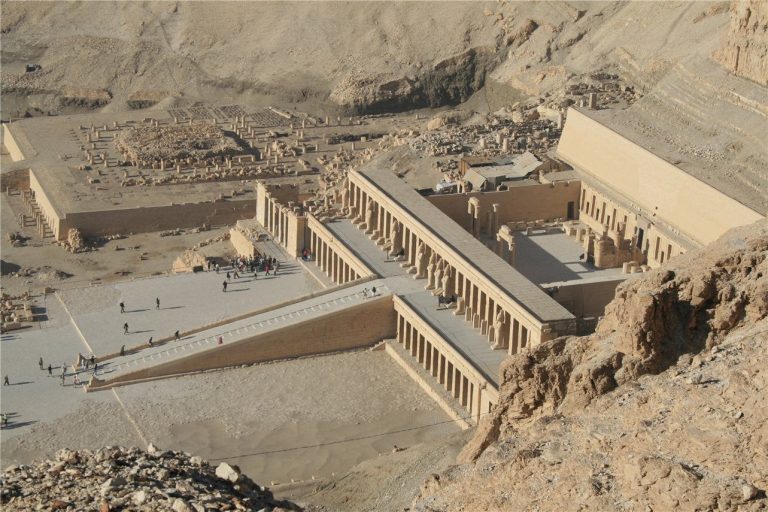
Architectural Brilliance: Design and Structure
The temple was built by Senenmut, Hatshepsut’s architect and advisor. Its design was unique, combining new ideas with important meanings.
Three Terraces: The temple has three large terraces connected by ramps. Each terrace has rows of square pillars that create a pattern of light and shadow.
Integration with Nature: Unlike other temples, Hatshepsut’s temple is carved into the cliffs. This makes it look like it naturally grew from the rock.
Inspiration from Mentuhotep II: Hatshepsut’s temple is based on an earlier one nearby, but it is larger, more balanced, and more polished.
Materials: The temple is mainly made of limestone, with some granite and sandstone. It once shone with smooth surfaces and colorful carvings.
As you walk through the terraces, you can see how the architecture leads your eyes upward—from the wide courtyard to the rising ramps and finally to the sanctuary deep in the cliffs. This journey takes you from the earthly world to the divine.
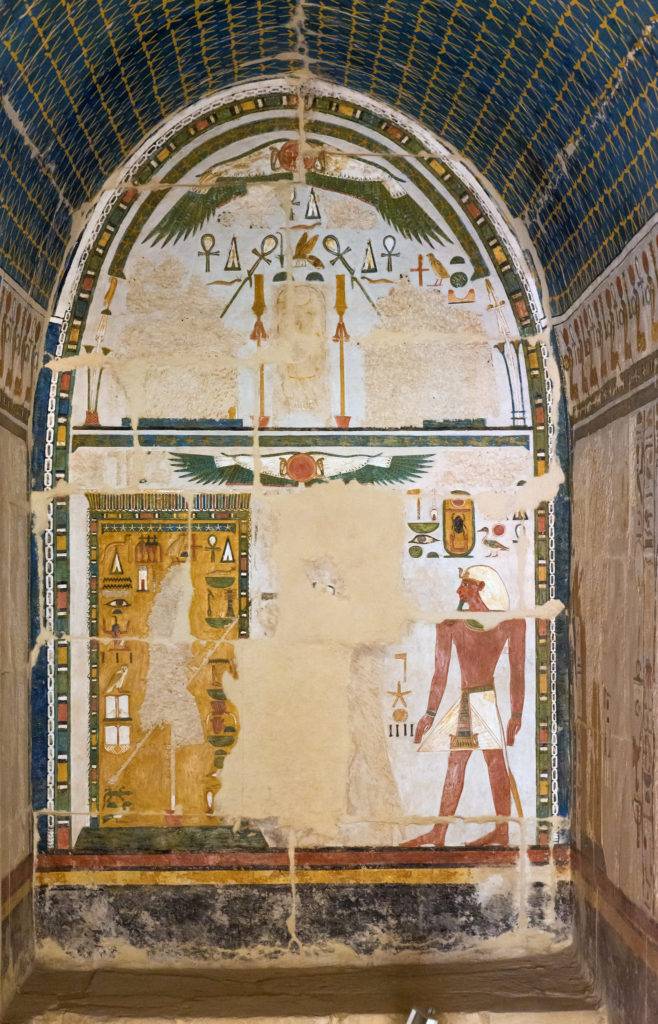
Symbolism and Religious Significance
The Temple of Hatshepsut was not just a place for burials; it was a sacred site for various gods and held political meaning.
The main sanctuary honored Amun-Ra, the top god of Thebes. This reinforced Hatshepsut’s claim that she was chosen by him to rule.
There was a Chapel of Hathor, dedicated to the goddess of love and beauty. It featured cow-headed columns and symbolized fertility, rebirth, and femininity.
The Chapel of Anubis honored the jackal-headed god of the dead, connecting the temple to burial rituals.
The temple is famous for its Divine Birth Reliefs, which show Hatshepsut’s miraculous birth, with Amun being her father. This story made her rule seem divinely approved.
Another notable relief shows her journey to Punt, where she traded for incense, ivory, gold, and exotic animals like giraffes. This highlighted the wealth of Egypt during her time.
The temple was also part of the Festival of the Valley, an annual event. During this festival, Amun’s statue would cross the Nile to visit the west bank graves, connecting the living and the dead.
These reliefs were not just for decoration; they were carefully designed to strengthen Hatshepsut’s image and achievements.
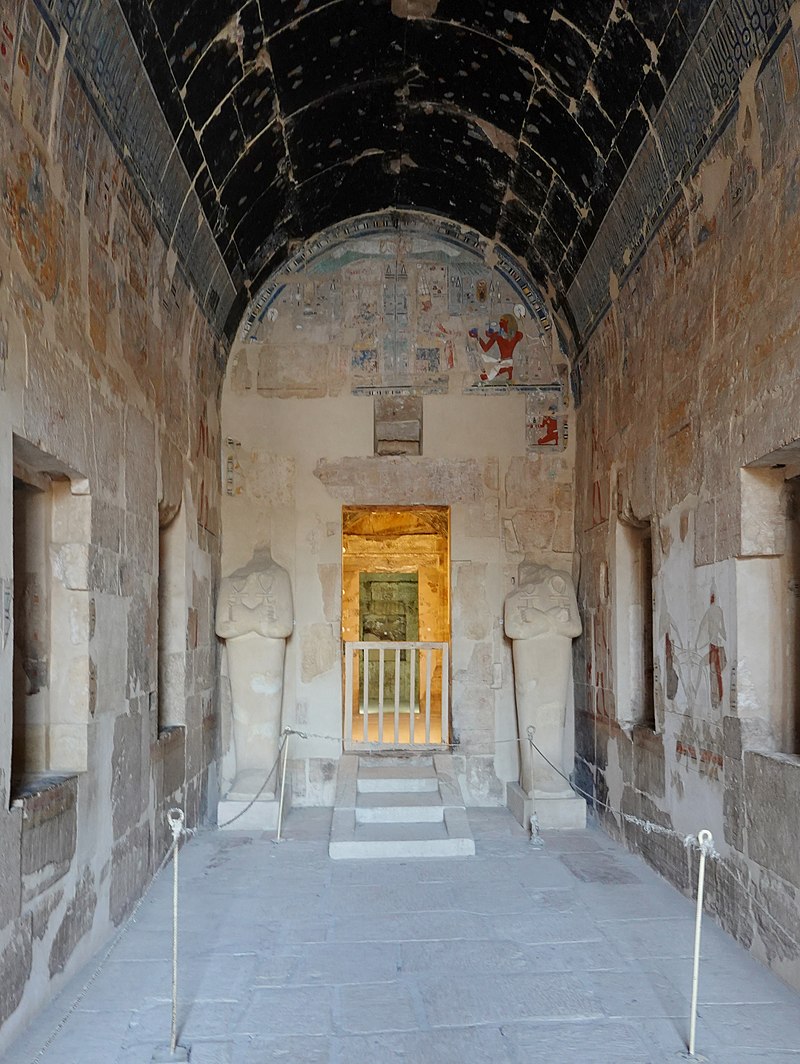
Attempts to Erase Her Legacy
Despite her achievements, Hatshepsut’s memory was almost erased after she died. Years later, Thutmose III ordered that her images and names be chiseled out. Statues of her were destroyed, and her name was left off the king’s lists.
Why did this happen? Scholars have different ideas:
Some think it was revenge for taking his throne.
Others believe it was to smooth the way for his son to succeed him.
Another idea is that later rulers wanted to erase the example of a female pharaoh.
Ironically, these attempts to erase her only show how remarkable her reign was. Today, her temple is one of the most lasting monuments from the New Kingdom.
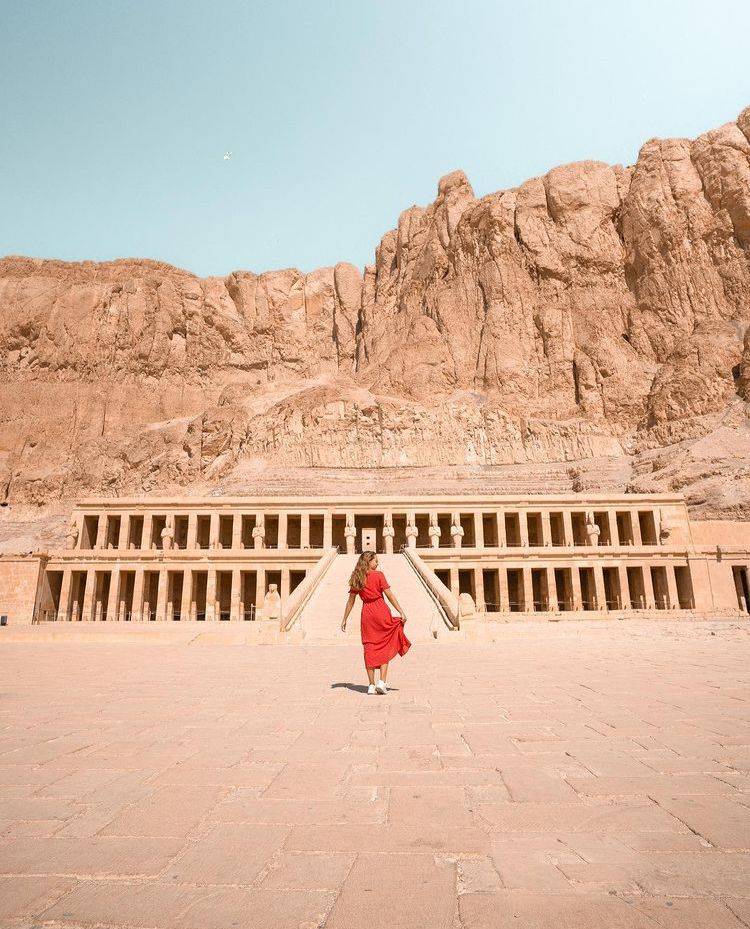
Visiting the Temple of Hatshepsut Today
For modern travelers, the Temple of Hatshepsut is one of Luxor’s must-see sites. Here’s what you need to know:
- Opening Hours:
Summer Working Hours: from 06:00 am to 05:00 pm
Winter Working Hours: from 06:00 am to 04:00 pm
Ramadan Working Hours: from 06:00 am to 04:00 pm
Tickets: Adult EGP 440 – Student EGP 220
- Best Time to Visit: Early morning or late afternoon, when the light is soft and crowds are thinner.
- Getting There:
- By taxi or private driver from Luxor city.
- As part of a guided West Bank tour (often combined with the Valley of the Kings).
- By ferry across the Nile, followed by a short drive.
- What to See:
- Reliefs of the Expedition to Punt.
- The Hathor Chapel with its cow-headed columns.
- Panoramic views from the upper terrace.
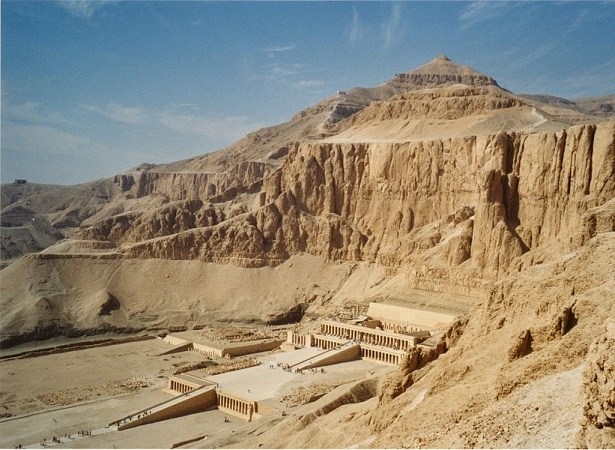
Recent Discoveries and Restorations
Archaeologists are still working at the temple and discovering new information. In the 20th century, Polish teams helped restore the temple by rebuilding columns and stabilizing decorations. In 2007, a CT scan found a mummy in the Valley of the Kings that was identified as Hatshepsut, connecting her story to the temple named after her. Ongoing conservation efforts make sure that visitors today can enjoy the bright reliefs and the beautiful design that the temple is known for.
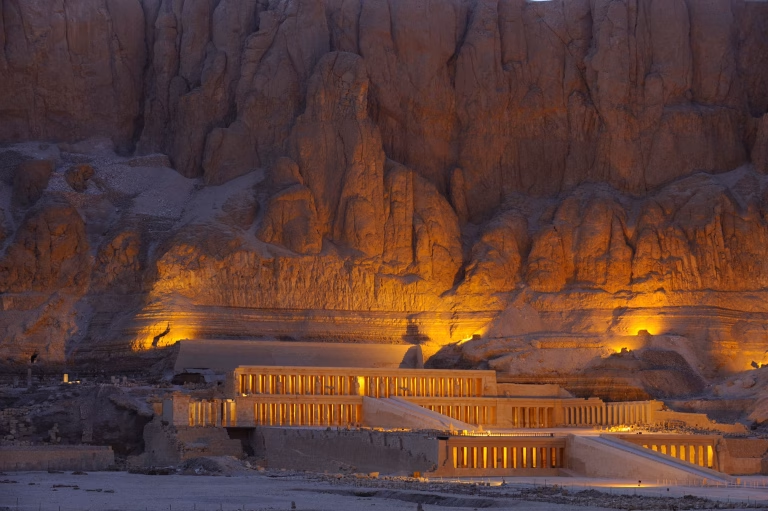
The Eternal Legacy of Hatshepsut
The Temple of Hatshepsut is not just a building; it is a powerful symbol. It tells the story of a woman who ruled as king, changed Egypt’s government, and created one of the most beautiful temples of the ancient world.
Today, as visitors stand before its terraces, they are not just looking at old stones. They see the vision of a leader who broke tradition, claimed divine support, and made her mark in history.
For anyone visiting Luxor, the temple is more than just a site to see; it is a journey into Egypt’s incredible story of power, ambition, and strength.
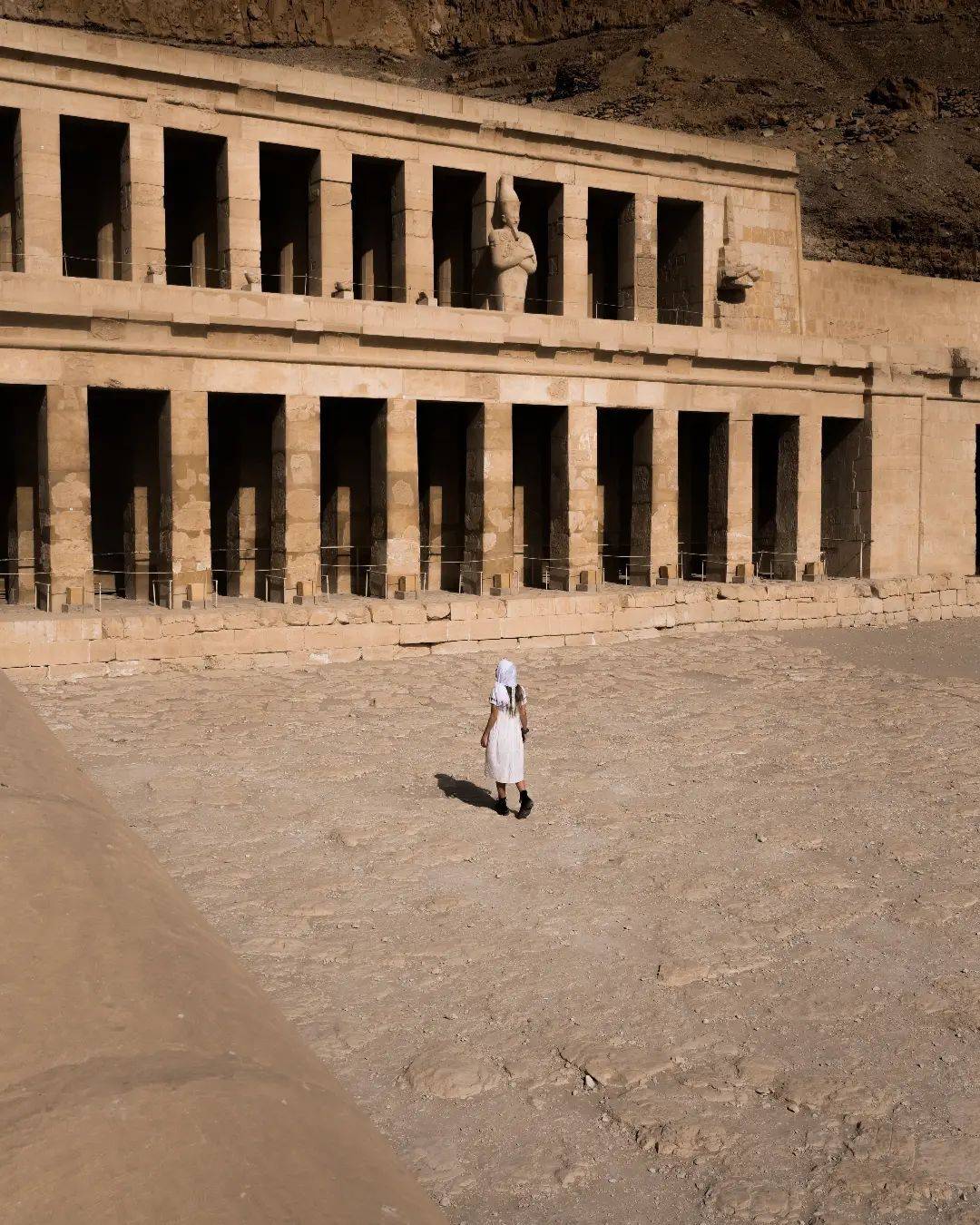
Why the Temple of Hatshepsut Belongs on Every Egypt Itinerary
The Temple of Hatshepsut is an important site on Luxor’s West Bank. It represents ambition, art, and resilience. This temple tells the story of a woman who ruled as king, established her reign through divine stories, and built one of the most impressive temples in ancient history.
For visitors, it offers more than just history. It allows you to walk in the footsteps of Egypt’s remarkable female pharaoh, see reliefs that show her power, and enjoy views of the Nile Valley from terraces that have stood for nearly 3,500 years.
Whether you love history, photography, or simply exploring new places, the Temple of Hatshepsut will leave a lasting impression. It shows that legacies carved in stone can endure, even against efforts to erase them.
Got a Question?
F.A.Qs
The temple was commissioned by Queen Hatshepsut during the 18th Dynasty and designed by her chief architect and advisor, Senenmut.
It is renowned for its unique terraced design, its integration with the cliffs of Deir el-Bahari, and its reliefs depicting Hatshepsut’s divine birth and the famous trading expedition to Punt.
The temple is located on Luxor’s West Bank. Visitors can reach it by taxi, private driver, or as part of a guided tour. Tickets are available at the Luxor ticket office and are often included in West Bank site packages.
Highlights include the Chapel of Hathor with its cow-headed columns, the reliefs of the Punt expedition, and the panoramic views from the upper terrace.
The lower terraces are accessible, but the ramps to the upper levels may be challenging for those with mobility issues. Shade is limited, so plan accordingly.
Early morning or late afternoon, when the light is soft and the crowds are smaller. The temple is especially photogenic at sunrise, when the cliffs glow golden.
Did you know that
By purchasing through our links, you support us at no additional cost.
Thank you for your support. ♥️
